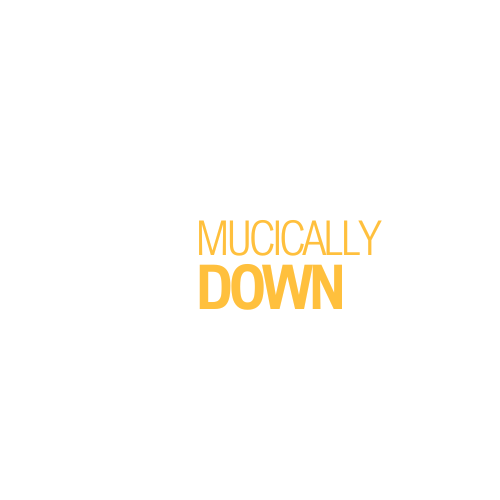Immerse yourself in the soulful world of jazz, a genre that’s captivated hearts for over a century. This article delves into the rich tapestry of jazz discographies, a treasure trove for enthusiasts and novices alike. With a particular focus on the high-quality 320kbps format, we’ll explore how this digital standard enhances the listener’s experience.
From the smooth tones of Miles Davis to the vibrant rhythms of Ella Fitzgerald, we’ll journey through some of the most influential jazz discographies available in 320kbps. Whether you’re a seasoned jazz aficionado or a curious newcomer, this exploration promises a deeper understanding and appreciation of this timeless genre. So, let’s dive into the world of jazz discographies 320, where every note tells a story.
Jazz Discographies 320
 Transitioning from the general landscape of jazz discographies, let’s embark on a specific expedition exploring the nuances of Jazz Discographies 320.
Transitioning from the general landscape of jazz discographies, let’s embark on a specific expedition exploring the nuances of Jazz Discographies 320.
Jazz Discographies 320 refers to vast collections of jazz recordings, converted or created in the audio standard quality of 320 kbps. Originally, these collections exist to preserve and streamline the accessibility of jazz music in this high-quality format. Jazz Discographies 320 represents a digital archive, housing an immense range of jazz compositions, from famed solos by Louis Armstrong to mesmerizing compilations by Nina Simone, all enhanced by the superior 320 kbps audio fidelity.
Singles out three primary elements that elevate Jazz Discographies 320 above ordinary collections of jazz music. Firstly, Superior Sound Quality, an inherent bonus of the 320 kbps format that offers listeners a full-bodied, detailed soundscape. For example, complex piano arpeggios from Thelonious Monk compositions hit with more impact, and the subtle nuances in Billie Holiday’s voice are more audible.
Evolution of Jazz Music
 Jazz music’s journey, driven by pioneers and their influencing elements, intertwines with the evolving culture and society. It has evolved significantly in its execution and influences over the decades, reflected in diverse Jazz Discographies 320 collections.
Jazz music’s journey, driven by pioneers and their influencing elements, intertwines with the evolving culture and society. It has evolved significantly in its execution and influences over the decades, reflected in diverse Jazz Discographies 320 collections.
Jazz music emerged in the late 19th and early 20th centuries, ingrained in African-American communities in New Orleans. It originated from a mix of African music styles and Western musical traditions. Rooted in blues and ragtime, evolving through the traditional brass bands, Jazz articulated the societal and cultural nuances of each era, earning the title of “America’s classical music.”
In the 1920s, New Orleans Jazz took a backseat, making way for Swing. The popularity of Swing surged in the ’30s and ’40s, increasing the orchestration in Jazz. The late ’40s and ’50s gave birth to two new Jazz styles, Bebop and Cool Jazz, emphasizing improvisation and intricate melodies. However, the 60s saw Jazz fragmenting into numerous styles such as Free Jazz, Hard Bop, and Modal Jazz. Fusion Jazz dominated the ’70s, bringing in elements from rock, Latin, and funk music. The ’80s and ’90s were marked by a Jazz renaissance and saw the emergence of Smooth Jazz. With the turn of the century, Jazz continued to evolve, fusion with various other genres, from pop to hip hop.
Notable Albums in Jazz Discographies 320
 Honoring Jazz Discographies 320, this section champions standout albums that have left an indelible mark on the genre. Let’s delve into the essential records and hidden treasures within this trove.
Honoring Jazz Discographies 320, this section champions standout albums that have left an indelible mark on the genre. Let’s delve into the essential records and hidden treasures within this trove.
Regarded as cornerstones in jazz, several albums within the 320kbps discography stand tall. Pioneer Miles Davis’ “Kind of Blue” (1959) is a case in point, catapulting modal jazz to a global audience. The transformative influence of this record, from its relaxed tempo to its innovative scales, resonates in jazz circles even today. Next, canonical in essence, John Coltrane’s “A Love Supreme” (1965) blends elements of hard bop and free jazz, tapping into spiritual themes in a four-part suite. It’s one album that sets the standard for improvisation and compositional structure. Thirdly, Ella Fitzgerald’s “Ella in Berlin” (1960) showcases the vocalist’s scat singing prowess and emotive rendition, consolidating her status as the queen of jazz. Each of these albums possesses its distinctive impact, shaping jazz music’s trajectory and setting the bar high for future generations.

